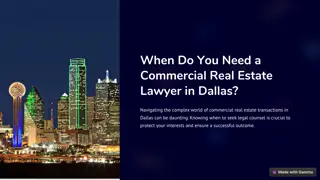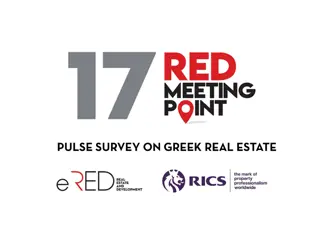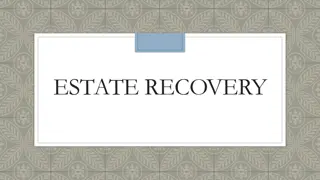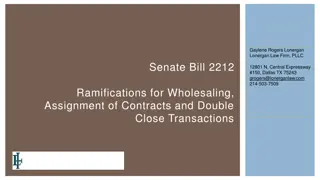Exploring Different Types of Retail Properties and Their Importance in Commercial Real Estate
Discover the various types of retail properties and their significance in the commercial real estate sector. Learn about malls, lifestyle centers, outlets, and power centers, their unique characteristics, and the impact of tenant mix on the success of retail spaces. Gain insights into the key questions to ask landlords and potential tenants to make informed decisions in the retail property market.
Download Presentation

Please find below an Image/Link to download the presentation.
The content on the website is provided AS IS for your information and personal use only. It may not be sold, licensed, or shared on other websites without obtaining consent from the author. Download presentation by click this link. If you encounter any issues during the download, it is possible that the publisher has removed the file from their server.
E N D
Presentation Transcript
Learn Commercial MODULE 7
What are the different types of retail properties? Importance of a great Tenant Mix What questions should I be asking landlords or prospective tenants?
Malls: Everyone knows Malls right? They are the easiest to identify due to the shear size. Typically they start around 300/400,000 sq ft and can grow into the market. The largest is a Mall in China 7.1MM sq feet wowzers could you imagine trying to find your store in that thing? Generally speaking the shopping area is enclosed, carry an array of department stores, food courts, possible movie theatres, tons and tons of apparel and specialty stores.
Lifestyle Centers: Chances are, if you live in a big city you have seen these. The majority being without a roof but carrying much of the same characteristics as a mall. Heavy on retail and specialty stores, more full service restaurants than a typical mall. Most will have at least one department store, and we typically see high end stores here. A great example is The Domain in Austin, TX. When the weather is great these are great. With rain, or extreme heat the lack of roof and protection from the elements creates less traffic turning into less business. More people walk around a typical Mall, and tenants have a better walk-by opportunity to sell. With great weather and well placed amenities Lifestyle centers can certainly thrive.
Outlets: Typically known for outlet stores by name brand companies offering discounted product. These aren t enclosed and can be as large as a mall. Great place to get last year s product at a massive discount just be prepared to walk a lot and deal with heavy traffic. A great example is the Outlet Mall in San Marcos, TX
Power centers: At 200,000 square feet and up, typically home of big-box stores, such has discounters, home-improvement retailers and the large specialty chains. Think Walmart, The Home Depot, Best Buy and Dick s Sporting Goods. Fast- food chains and other eateries are often found on pad sites in their parking lots.
Community centers More commonly know as a strip mall. Typically in the 100-300K sq ft range. Drug stores, grocery store, other retail, a restaurant or two. Neighborhood centers Smaller version of community centers. These are typically referred to as grocery- anchored properties, along with other convenience retailers. They run up to 125,000 square feet. Convenience centers Very small properties usually less than 30,000 square feet. We ve all seen these, filled with convenience-based retailers, such as dry cleaners, nail salons, drug stores and other types of shops where customers are looking for a quick purchase or service.
Other Retail We can consider several other assets retail but more specialized. Gas Stations, urban retail, mixed use properties with retail on the bottom, specialty stores that are stand alone, retail designed for travelers, CVS type stores etc.
Make sure you know who and what is happening with regard to the retail in your area. How do you take control of your market: Identify the Owners Identify the Tenants Identify the Property Identify the Competition Identify the Deals Always strengthen your market intelligence whenever possible.
Is Tenant Mix Important? Have you ever wondered why some retail centers survive, and some don t? We ve all seen that one location that for some reason, no matter what it is it fails. WHY? Is it just a bad location, no visibility, demographics of the area don t fit what they sell or is it just a un sustainable business? Lease rates too high? There are a lot of factors in determining the longevity and sustained success of a center. It certainly isn t stagnant. Constant upkeep, reviewing, spending money on capital improvements you must keep up with the market. Happy Tenants with successful business s don t move!! It costs too much.
As a Broker when you are negotiating a Retail deal, 99% of the time we do not get a renewal commission. Why? The owners know, when someone has a successful business at a specific location due to drive by, repeat business etc that tenant isn t going anywhere. Unlike Office or Industrial where the location doesn t matter as much. So how do we maintain a good tenant mix? How do we know when to re-evaluate our tenants or not renew one? When do we need to spend money on CAPEX? Who do we look to for advice? How do we justify the cost to improve our building?
Tenant MIX The best indicator is the tenants business s are all doing well, and they are happy. That is a great sign. How do you know -- YOU ASK. It s a feel good moment, most tenants never meet the actual owner. They meet the Broker(s), property manager etc. Some owners don t ever meet the tenants. BUT what might that do? As a tenant, heck, even a residential tenant at an apartment. What if the owner came up one day and said: Hey Gary I m Robert, I m the owner here and just wanted to say thank you for being a great tenant. How s business? Is there anything we can do to help improve your experience? Not only will you potentially get insight on how they are doing, but you get direct answers to what capex you may need to do in the next 12 months if not immediately. People like to know they are HEARD, and that their opinion matters (even if it doesn t)
Tenant MIX Most of the time we want to have exclusive business s in the center. You don t want two nail salons in the same center, you don t want two hamburger restaurants and two smoothie/juice tenants. This mainly applies to the smaller retail centers. Once you get into a MALL environment that goes out the window as they are so big you can have 4 nail salons and still be just fine. Do the tenants drive traffic or are they benefiting from the traffic being driven by the rest, or by the anchor? The more drivers you have the more likely the rest of the stores will reap the reward and everyone wins. When the anchor exits, we usually see the center start to slip. The asset needs to be repositioned or a new anchor needs to come in. Demographics play a huge role as well. High end specialty stores need to be in a location with a high average income. That s why you see Dollar General s and discount retail shops pop up in lower income areas. They are going to the customer, vs the customer driving to them (so to speak)
Tenant MIX It s time to re-evaluate the tenant mix when we start to see fewer and fewer cars in the parking lot, tenants start asking for reduction in rent, The anchor won t return our phone call when we start calling about renewing. The tenant s will let you know, and if they don t it can happen pretty quick. Is there a reason? Is there a new center down the street, has the rates dropped in the area are we too high?, Has something happened to this location? Find out, educate yourself on the WHY, adapt and move on. If you have a toxic tenant do not renew. If they are always complaining, talking bad to the other tenants, not maintaining the appearance the way it should be, hearing customer complaints. What if they have 5 years left and always pay on time. Find out what s going on adapt or make a decision.
When to spend Money ON CAPEX Always stay up to date, stay relevant, stay LEASED If you see new retail popping up, it draws attention. Make sure your parking, paint, awning s, monument signage, fa ade, tenant sign s are in good shape and fully functional. The moment you see your property looking tired everyone else has already noticed. Lighting, landscaping, and paint go a long way. The simple things can mean the most. The outside appearance is your biggest value play. Adding layers, texture or metal and wood accents. If doesn t have to be a ton of money, just needs to look great. Over promise and then OVER deliver!! How can we justify the cost? If you want your rents to continue to see a 3% increase year over year, they will expect to see a property being well kept. And what is the risk of not doing any CapEx? If you have tenants already leaving the cost is MUCH higher to market, pay TI, pay commissions and holding costs.
Where to seek advice or help TENANTS are your best friend. Go to the new cool center and ask the manager. Wow I love this building so cool. What made y allcome to this location? They did a great job renovating this place how are you liking it here? Would you recommend it why? YOU get the answers when YOU ask the questions. Also ask the Brokers. Hey Robert what are the tenants being drawn to right now? Just any availability in the sq footage, new look, new location, CBD area, where are you seeing the most activity, what should we do to attract more tenants to our location, how are the prices changing lately what are you seeing in the market today?
WHAT TO ASK OR LOOK FOR Location, Layout, Price, Demographics, Other Tenants, Visibility, Drive by Traffic, new Developments in the Area, TI allowance, Term Desired, Workforce in area - all great things to know and use when either searching for a location, or understanding so you can better serve the tenants looking. Remember when you enter an emerging market it becomes harder. Because there will continue to be an influx of newer tenants trying out the market, new developments pulling tenants away and from your store, better locations etc. When you find a location that works, as a tenant, I want to know the following: How large is the space, how are the other tenants liking being here, what is the Rate, what are the NNN s and what do they cover, Is there any TI available, Where in the center will my space be?? How soon can we get started, how soon do you think we can finish with improvements so I can occupy
WHAT TO ASK OR LOOK FOR As a Landlord I would be asking: What type of business are you in, how long have you been in that business, is this your first location, what made you choose this area, how long of a term are you looking for, what type of finish out are you looking to do, how many square feet do you need? Once you think the tenant is a good fix and you start negotiating. Most owners are requesting to see PFS Personal Financial Statement, or at least a business financial statement if this is an ongoing or 2nd location. When the market is hot we see a ton of personal guarantee s, when the market is soft we see these go away. Owners want to make sure the tenant has the ability to pay the rent even if the business is suffering. Ask the Broker later have y all seen a lot of spaces? Do you think this will be a good location for their business? Is the rate in line with their budget?
Action Item 1 Complete the following exercises: 1: Look at 10 deals this week RETAIL asset from a Tenants perspective would I want to lease here? 2: Evaluate your top 3 and say why.
Action Item 2 Complete the following: 1: Continue to contact your top 3 buckets that you agreed were non-negotiable MUST DO s. 2: Start time blocking to contact 20 people per day specifically asking for new business, or for looking for opportunities. 3: How can WE get you into that FIRST DEAL TODAY?? What needs to happen. We re hear to help.
DID you Time Block? Work on your Top 3 buckets? Review 10 deals? We can t make you get into action. The ones who succeed get into action. Are you going to be all talk, or are you going to take massive action to reach your TRUE potential?? Talent is over rated .Drive and Passion are everything.























